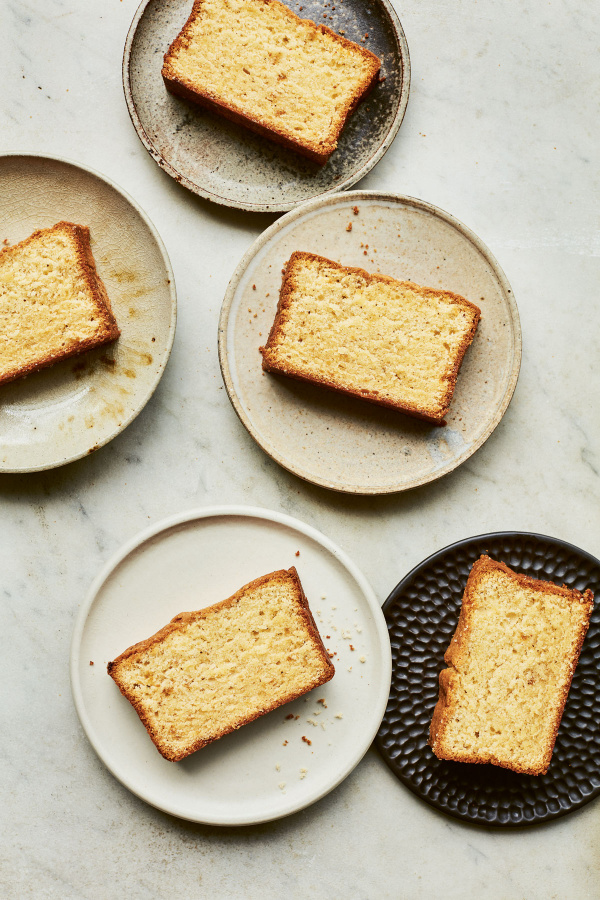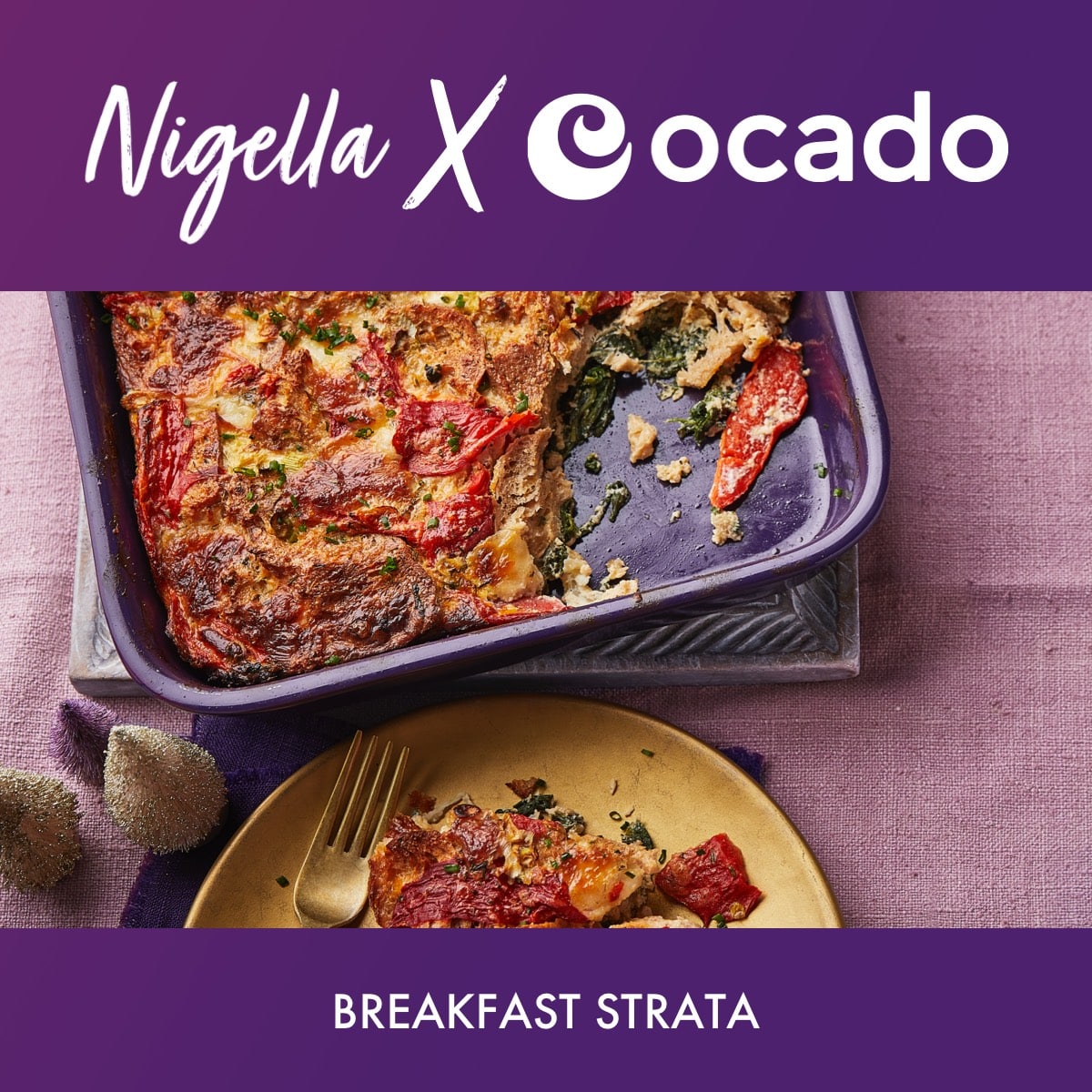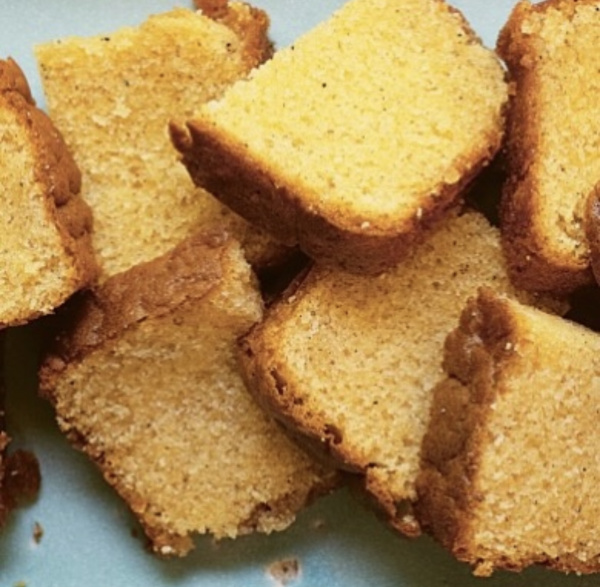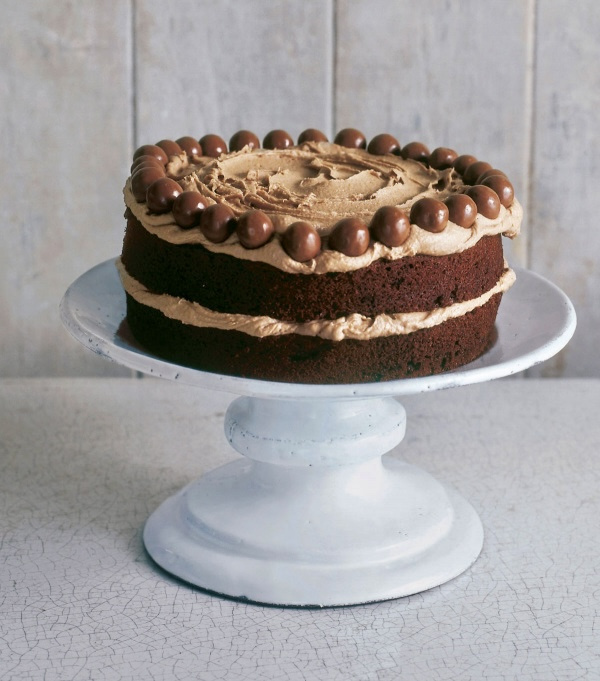Malted Brown Butter Pound Cake
by Benjamina Ebuehi, featured in A Good Day To Bake Published by QuadrilleIntroduction
Not many cakes are as comforting as a pound cake. It’s simple in both name and appearance, but that’s where its beauty lies. Heavy with butter, the dense crumb is at home when thickly sliced and served alongside a big mug of tea. The trick in getting the best texture and avoiding the dryness that is so often associated with pound cakes is to really, and I mean really, beat the butter and sugar for a lot longer than you may expect or be used to. You want it super-pale and fluffy, so get that electric whisk on high speed and scrape down the sides of the bowl often. This is one of those cakes that gets better with age, a perfect one to make ahead.
Not many cakes are as comforting as a pound cake. It’s simple in both name and appearance, but that’s where its beauty lies. Heavy with butter, the dense crumb is at home when thickly sliced and served alongside a big mug of tea. The trick in getting the best texture and avoiding the dryness that is so often associated with pound cakes is to really, and I mean really, beat the butter and sugar for a lot longer than you may expect or be used to. You want it super-pale and fluffy, so get that electric whisk on high speed and scrape down the sides of the bowl often. This is one of those cakes that gets better with age, a perfect one to make ahead.

Share or save this
Ingredients
Serves: 8
- 250 grams unsalted butter (softened, plus extra for greasing)
- 250 grams caster sugar
- 2 teaspoons vanilla extract
- 3 eggs (at room temperature)
- 250 grams plain flour
- 2½ tablespoons malted milk powder (such as Horlicks)
- 1 teaspoon baking powder
- ½ teaspoon salt
- 120 grams sour cream (at room temperature)
- 1 cup plus 2 tablespoons unsalted butter (softened, plus extra for greasing)
- 1¼ cups granulated sugar
- 2 teaspoons vanilla extract
- 3 eggs (at room temperature)
- scant 2 cups all-purpose flour
- 2½ tablespoons malted milk powder (such as Horlicks)
- 1 teaspoon baking powder
- ½ teaspoon salt
- ½ cup sour cream (at room temperature)
Method
Malted Brown Butter Pound Cake is a guest recipe by Benjamina Ebuehi so we are not able to answer questions regarding this recipe
- Start by browning the butter. Melt the butter in a medium saucepan, stirring occasionally. After 3–4 minutes, the butter will start to foam, but keep stirring. Once the butter starts smelling nutty and fragrant and has darkened in colour, remove from the heat and pour into a heatproof bowl along with all the brown bits at the bottom of the pan.
- Let it cool to room temperature before chilling in the refrigerator. We want it to be a soft, spreadable consistency, so keep an eye on it and give it a stir every so often. If it gets too firm, just let it sit out at room temperature for a bit.
- Preheat the oven to 180°C (160°C fan/350°F/gas mark 4).
- Grease and line the base and sides of a 900-g (2-lb) loaf pan.
- Once the butter has firmed up enough but is still soft, add it to the bowl of a stand mixer fitted with the beater attachment along with the sugar and vanilla. Beat on medium-high speed for 6–8 minutes, scraping down the beater and sides of the bowl every minute or so, until the butter is super-pale and fluffy. Add the eggs, one at a time, and beat for 2 minutes after each addition, again scraping down the sides and bottom of the bowl frequently.
- In a separate bowl, mix together the flour, malted milk powder, baking powder and salt. Pour half of the mixture into the butter mixture and beat on low speed until just combined. Add the sour cream and mix on low speed until combined. Pour in the rest of the flour mixture and mix until fully incorporated. Pour the batter into the prepared pan and bake for about 50–60 minutes until a skewer inserted into the middle of the cake comes out clean. If the cake is browning too quickly before it’s cooked, place a sheet of foil on top and continue to bake.
- Let the cake cool for 15 minutes in the pan before removing it to a wire rack to cool completely.
- Start by browning the butter. Melt the butter in a medium saucepan, stirring occasionally. After 3–4 minutes, the butter will start to foam, but keep stirring. Once the butter starts smelling nutty and fragrant and has darkened in colour, remove from the heat and pour into a heatproof bowl along with all the brown bits at the bottom of the pan.
- Let it cool to room temperature before chilling in the refrigerator. We want it to be a soft, spreadable consistency, so keep an eye on it and give it a stir every so often. If it gets too firm, just let it sit out at room temperature for a bit.
- Preheat the oven to 180°C (160°C fan/350°F/gas mark 4).
- Grease and line the base and sides of a 900-g (2-lb) loaf pan.
- Once the butter has firmed up enough but is still soft, add it to the bowl of a stand mixer fitted with the beater attachment along with the sugar and vanilla. Beat on medium-high speed for 6–8 minutes, scraping down the beater and sides of the bowl every minute or so, until the butter is super-pale and fluffy. Add the eggs, one at a time, and beat for 2 minutes after each addition, again scraping down the sides and bottom of the bowl frequently.
- In a separate bowl, mix together the flour, malted milk powder, baking powder and salt. Pour half of the mixture into the butter mixture and beat on low speed until just combined. Add the sour cream and mix on low speed until combined. Pour in the rest of the flour mixture and mix until fully incorporated. Pour the batter into the prepared pan and bake for about 50–60 minutes until a skewer inserted into the middle of the cake comes out clean. If the cake is browning too quickly before it’s cooked, place a sheet of foil on top and continue to bake.
- Let the cake cool for 15 minutes in the pan before removing it to a wire rack to cool completely.





Tell us what you think
Thank you {% member.data['first-name'] %}.
Explore more recipesYour comment has been submitted.